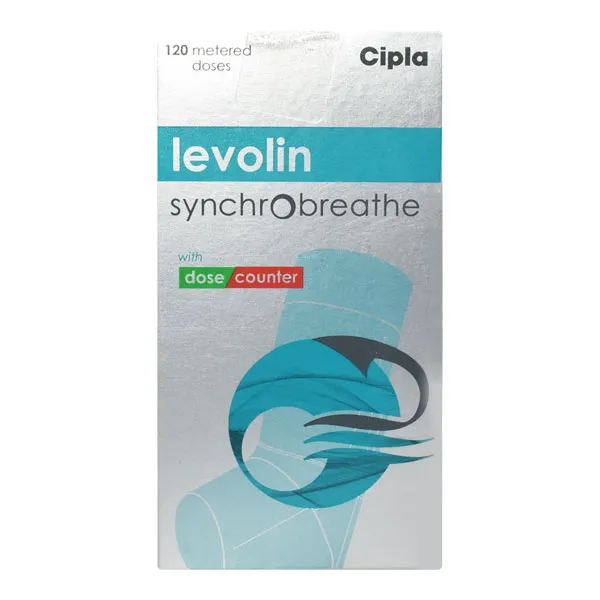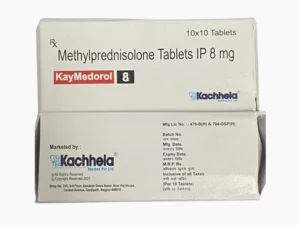Levolin Synchrobreathe Inhaler: Complete Guide to Usage, Benefits, and Safety
✅ Description & Composition
Levolin Synchrobreathe Inhaler contains Levosalbutamol, a short-acting beta-2 adrenergic receptor agonist (SABA). It is used primarily to relieve bronchospasm in conditions such as asthma and chronic obstructive pulmonary disease (COPD).
- Strength: Typically 50 mcg of Levosalbutamol per actuation
- Inhaler Type: Breath-actuated inhaler (BAI) – activates automatically when the patient inhales, making it easier for those with coordination difficulties.
🧬 Mechanism of Action
Levosalbutamol selectively stimulates beta-2 adrenergic receptors in the airway smooth muscles, leading to:
- Bronchodilation (widening of airways)
- Relief from bronchospasm
- Improved airflow and breathing
It acts rapidly, usually within 5–15 minutes, and its effect lasts about 4 to 6 hours.
💊 Indications / Uses
The Levolin Synchrobreathe Inhaler is used for:
- Acute asthma attacks (rescue inhaler)
- Exercise-induced bronchospasm
- Reversible airway obstruction in COPD
- Intermittent wheezing and breathlessness
🔄 How to Use
- Hold the inhaler upright.
- Breathe out fully, away from the device.
- Seal your lips around the mouthpiece.
- Inhale deeply and strongly – the device will automatically release a dose.
- Hold your breath for 5–10 seconds and then exhale.
- Replace the cap.
✔️ No need to coordinate button press with inhalation (ideal for children and elderly).
❌ Contraindications
- Known hypersensitivity to Levosalbutamol or any component of the formulation.
- Severe hypersensitivity reactions (rare but possible).
🤒 Side Effects
Common:
- Tremors
- Palpitations
- Headache
- Nervousness
- Dry mouth
- Cough or throat irritation
Rare but serious:
- Chest pain
- Irregular heartbeat
- Allergic reaction (rash, swelling, breathing difficulty)
🔄 Storage
- Store at room temperature (15–30°C).
- Keep away from direct sunlight and moisture.
- Do not puncture or burn the canister.
📝 Patient Counseling Tips
- Rinse mouth after use to avoid dry mouth or throat irritation.
- Monitor asthma or COPD symptoms; if you need the inhaler more frequently, consult your doctor.
- Not a substitute for maintenance inhalers (like corticosteroids).
- Always keep a backup inhaler.









Reviews
There are no reviews yet.